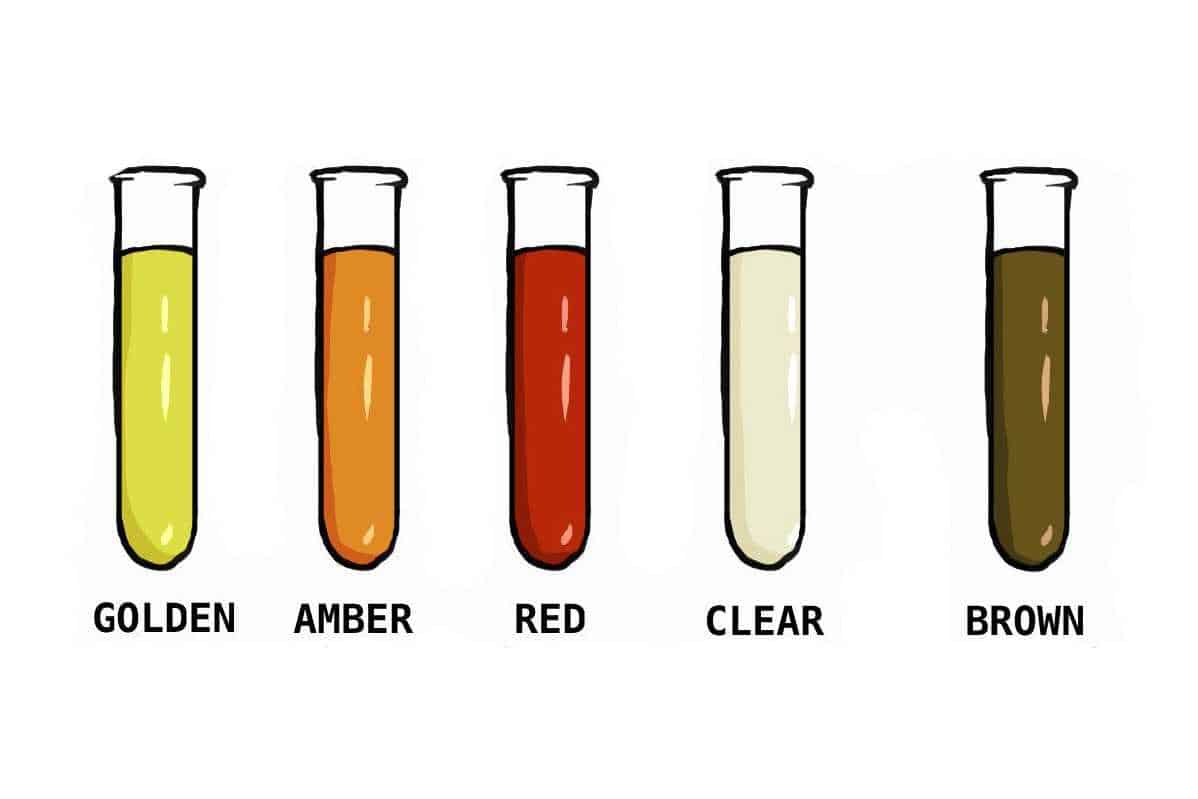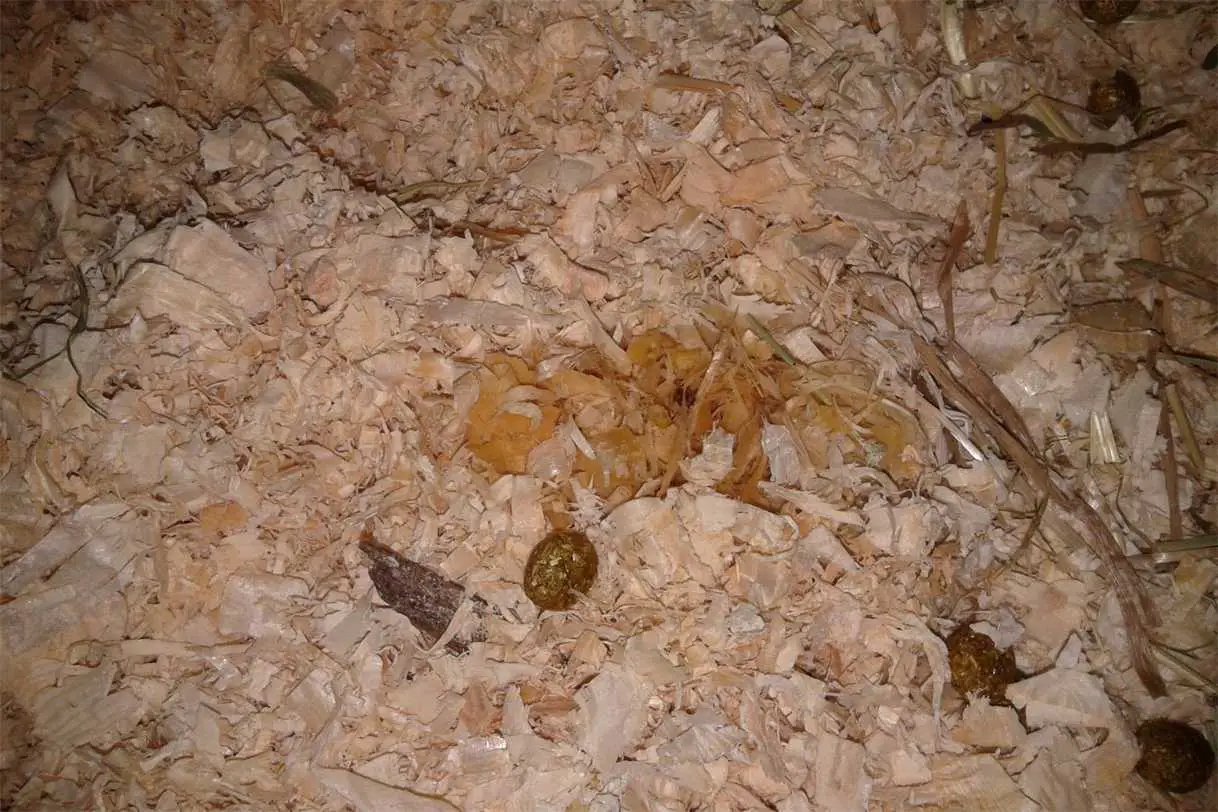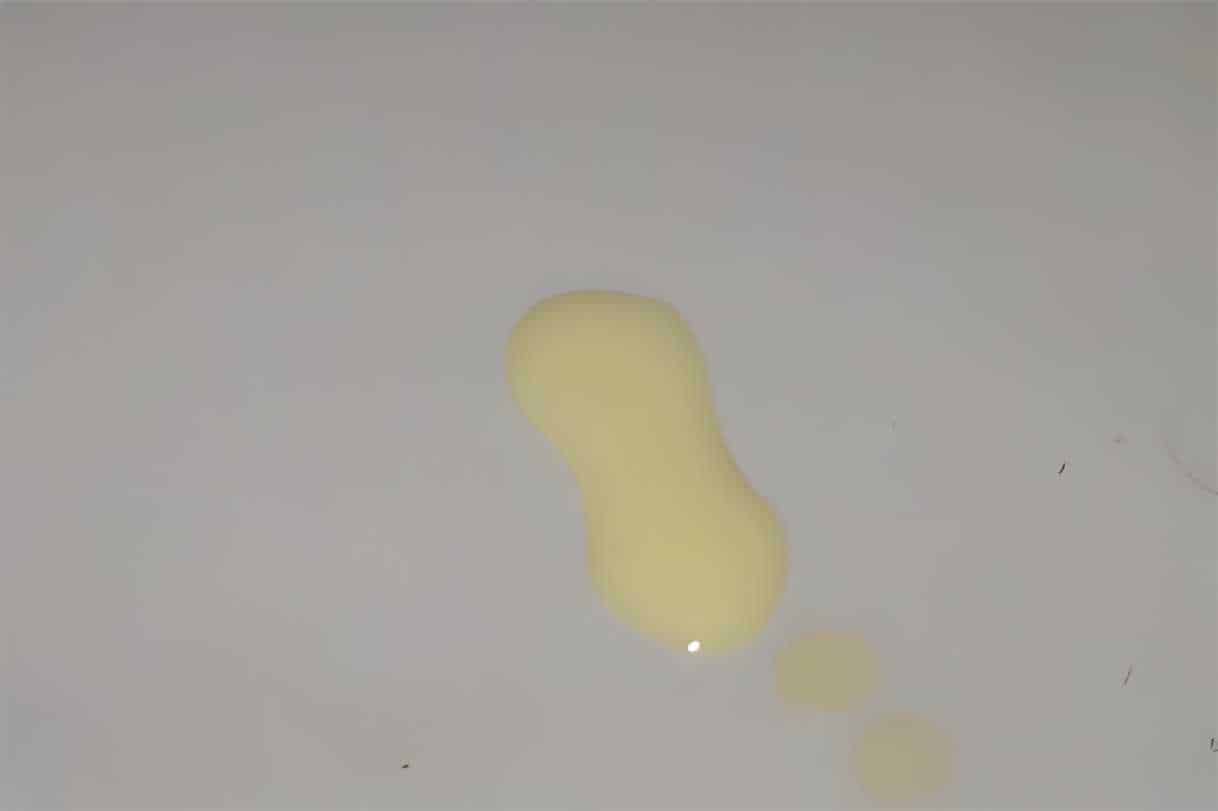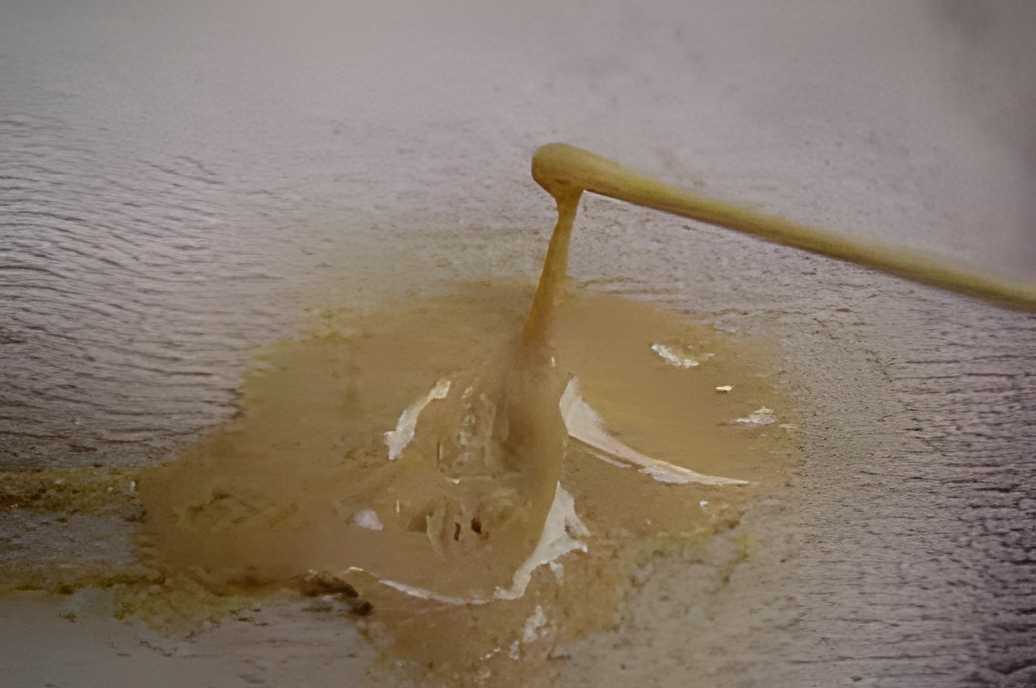Urine is an integral part of a rabbit’s life. It is one of the things a rabbit owner should monitor or be vigilant of. Their urine color can indicate underlying issues, so having a rabbit urine color chart is helpful. This way, you stay in tune with how your rabbit is doing.
Rabbit Urine Color Chart
- Bright yellow / Golden: Yellow urine, whether it may be bright yellow, slightly golden, or golden yellow, is expected. This color means that your rabbit is eating well. Bright yellow or golden pee also means that they do not have any underlying health conditions and are healthy overall, especially in their diet.
- Orange: An orange-colored pee from your rabbit is still under the ‘normal’ category. However, an orange-colored pee can mean that your rabbit might be slightly dehydrated.
- Red: Red pee is normal for rabbits. However, it can be quite an alarming type of pee from your rabbit because it can be mistaken for blood. However, for rabbits, this is still under red-colored pee and is usually caused by the food they consume. The color should return to normal after a few days. If not, check with your trusted vet and see if something’s up.
- Red spots: Red spots in your rabbit’s pee can mean two things. It could be because of pigments from their diet, or it can be more severe and be traces of blood. You can check with the help of your trusted vet.
- Clear: When your rabbit’s pee is clear, it could indicate excessive water drinking. While water is healthy and all, transparent pee can signify kidney problems.
- White: You may notice that your rabbit might excrete white substance occasionally. This is normal for them as this is their way of eliminating excess calcium. However, note that this is only okay if it happens sometimes. If this occurs more frequently, it’s advised that you visit your vet immediately.
- Brown: A brown-colored pee is a strong indicator that your rabbit is dehydrated.
- Cloudy / Chalky: When your rabbit is excreting cloudy pee, this can mean something more serious. Cloudy excretion is a sign of bladder stones.
Rabbit Pee Color Variation
It can be pretty alarming once you see your rabbits urinating and their pee turns out to be a different color other than the usual yellow ones. Fortunately, this is considered normal. You may be able to see your rabbit’s pee change in color or shade for a day.
However, some pee colors can indicate underlying and possible health issues, so it’s good to know whether or not the color of your rabbit pee is standard or not.
When you spot some orange or brown pee puddles during the day or schedule of checking, check their water bowls. As indicated in the chart, brown puddles are a sign of dehydration.
This calls for a more hands-on checking and refilling of their water bowls. Perhaps they need a refill, or you may be having long delays in the refilling process that could have deprived them of hydration. Once you refill their water bowl, please encourage them to drink more.
The changes in their pee color can be caused by what they eat or lack. For example, as the pee gets darker, this indicates dehydration. Rabbits pee a range of two to eight times a day, and their pee color can change multiple times during the day.
As their pee color changes, you can monitor how they are doing or whether or not they are dehydrated. When you notice that their pee color has turned bright yellow to orange, this can be caused by the heavy consumption of carrots and other vegetables with orange pigment.
While clear pees are usually ideal, the normal rabbit pee is murky and not completely clear. However, it’s a different issue if it’s too murky. It could be a sign of a severe bladder problem. The color of your rabbit’s pee is something you should check to make sure that your rabbit is okay and is living the best life they deserve.
Yellow, Orange, and Brown Rabbit Urine
When your rabbit’s pee color is in the shades of yellow, orange, and brown, the pee is normal. However, you need to note that your rabbit can be mild to severely dehydrated. In this case, you need to act and make sure your rabbit stays hydrated. Here are some ways you can keep your rabbits hydrated.
- If you happen to be using a water bottle, you might consider switching to a water bowl. A water bowl makes it more convenient for them to drink water, and so this is an effective way to encourage hydration in your bunnies.
- It would be best if you also gave your rabbit cool water to enjoy now and then. This will help make them feel refreshed and add a bit of excitement to their hydration process.
- You can also help hydrate your rabbit by giving them fresh fruits and vegetables with high water content. Leafy greens, for example, contain a high level of water content, and you can encourage more water consumption for your rabbit by sprinkling more water to the vegetable after you wash them.
- You can spice up their drinking experience by setting up a running fountain water bowl. The setup makes it more interesting for them and would encourage them to drink more water. Running water also equates to fresher water, another plus point to the process.
- You can also add some flavors to your rabbit’s water. To spice up their water, you can add drops of flavoring like a teaspoon or a tablespoon of unsweetened fruit juices to their water. You can try apple, mango, or carrot juice as rabbits like these fruits.
- One of the most important things is to make water available. Accessibility is essential for hay stash, or water consumption digestion is tightly anchored to their overall health.
Milky and Chalky Rabbit Pee
White excretion or having white spots in your rabbit pee can seem very foreign, especially if you are a first-time rabbit owner. If you happen to see one, worry less as this is just their medium of getting excess calcium out of their system.
There’s nothing to worry about this as the calcium they excrete is not something they need at the moment. Thus, the chalky or milky substance you found in your pee is not an infection but just excess calcium.
If you observe that this happens more frequently than it should, this calls for checking your rabbit’s diet. Perhaps, you must change some things in your rabbit’s diet. You may include high in calcium food, and it may be a handful for your rabbit’s body to process.
After adjusting their menu and observing frequent calcium deposits, you might want to take your rabbit to the vet and let them have a checkup. Your rabbit can have some underlying issues considering how the calcium excretion doesn’t change after all the remedies are done.
Common Rabbit Bladder and urinary Issues
Calciuria
This is a health issue that involves too much consumption of calcium. Their urine can come out sludged. You must do something about this before it worsens and poses a severe risk to your rabbit’s life.
Bladder stones
Here are the common symptoms of bladder stones in your rabbit.
- The average number of times your rabbit should pee in a day should be around two to eight times. It’s essential to monitor their urine cycles so you know whether they are doing this excessively or usually.
- Scattered pee locations can be a sign of bladder problems too. If your rabbit has been trained to pee in a specific location, such as their litter box, but you spot pee puddles in different locations, they may have trouble with their bladder.
- If you observe that they might have difficulty peeing or are not peeing at all, this can also be a signifier of a health issue.
Urinary Tract Infection (UTI)
UTI can be more familiar to humans. Just as for humans, UTI for rabbits is caused by bacterial infection. Your rabbit is more susceptible to UTIs during its third to the fifth year. Several things, including the following, can cause UTI in rabbits:
- Obesity
- Too much calcium
- Too much consumption of a vitamin or so
- Stress
- Dirty space or unhygienic conditions
- Having trouble urinating
- No urine activity
UTI can cause serious issues and hardships to your rabbit. It can be painful for your rabbit as it is in humans. Thus, you must bring your rabbit to the vet and check for more serious infections that can be the root of their UTI.
Summary
Having a rabbit urine color chart can be very helpful, especially for first-time rabbit owners. Monitoring their urine is vital to ensure that your rabbit is in its best condition. Their urine color is also a signal for a diet adjustment or change. This way, you can avoid further health issues and risks for your rabbit.





Could a urinary tract infection orCalciuria kill a rabbit? My rabbit died suddenly after loosing control over her bladder and spraying urine.
I’m so sorry to hear about the loss of your rabbit. It’s always difficult to lose a beloved pet, especially when it happens suddenly. To address your question, while it’s possible for a urinary tract infection (UTI) or calciuria (excessive calcium in the urine) to contribute to a rabbit’s health decline, they typically aren’t the direct cause of death.
However, severe UTIs, if left untreated, can lead to kidney infections or kidney damage, which can be life-threatening for a rabbit. Similarly, calciuria can be an indication of an underlying health issue, such as kidney stones, bladder stones, or other urinary system problems that could potentially be fatal if not addressed.
Hey so I just walked in from work and seen my rabbit have this dark orange look like kinda red pee I had her for 3 years and never seen this what does this mean….. (worried) and no she not fixed she’s getting it done next week
Hi Manifest,
Hello! I understand your concern about your rabbit’s urine color. It’s not uncommon for rabbit urine to vary in color, ranging from pale yellow to dark orange or even red. This can be influenced by factors like diet, hydration, and stress.
While it’s possible that the change in color is harmless and related to diet, it’s important to monitor your rabbit for any additional symptoms or changes in behavior.